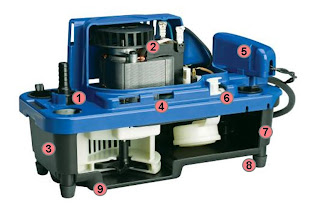Flexible metal pipe connector (or flexible metal hose) is a relatively expensive part of your piping system. Fabricated of thin-wall tubing, it cannot take as much abuse as pipe of the same nominal diameter. The connectors are designed to do a specific job, and will give you excellent service if they are installed properly. Carelessness and lack of foresight have proven costly in many jobs. Install it correctly, if you want it to work correctly.
Don’t COMPRESS a flexible connector to make it fit! Installing it under compression stresses corrugated element, slackens braid pressure-restrainer, reduces further compressive movement, and generally results in early failure.
DO be sure to install it at exact normal free length as supplied. If connector is too long, shorten piping.
Don’t FORCE-ROTATE one end of connector to match bolt holes in mating flange. This sets up residual torque-stress in connector, which causes cracking of corrugations or fitting joint. A flexible, connector absorbs vibration, or slow movement perpendicular to its axis. It is NOT capable of withstanding torque.
DO be sure all bolt holes are perfectly lined up before welding pipe flange into place. Best insurance is use of one floating flange, to ease matching of bolt holes.
Don’t STRETCH connector to fit a gap longer than its factory-furnished length. Stretching places excessive residual stresses on braid and fittings. Result? Early rupture.
DO measure carefully to be sure connecting pipe is cut to exact length.
Don’t IMPOSE TORQUE on connector when making up fittings and don’t use a wrench on the ferrule or on the braid. Where a hex end is provided, use it. If not, use the wrench on the fitting length provided. Always use two wrenches, to keep the hose from being torqued as the joint is made up.
Don’t let welding sparks hit the braid; they may burn some of the braid stands. Protect braid with asbestos cloth or place other nonflammable material in front of it when piping must be welded very close nearby.
DON’T FAIL TO ANCHOR. Anchor piping close to flexible connector, at end opposite source of vibration. If not, hose will transmit all vibration to pipe line, it may even amplify it. Anchor flexible metal hose at the piping end, never at the equipment end. If hose is not securely anchored, it will transmit all vibration to the piping system. Not only that, it will often act like a spring and actually amplify the vibrations. Whenever possible, install flexible connector to pump, compressor, or other vibrating equipment- before valves, pipe line, fittings so that most vibration is absorbed and isolated instead of being transmitted.


















